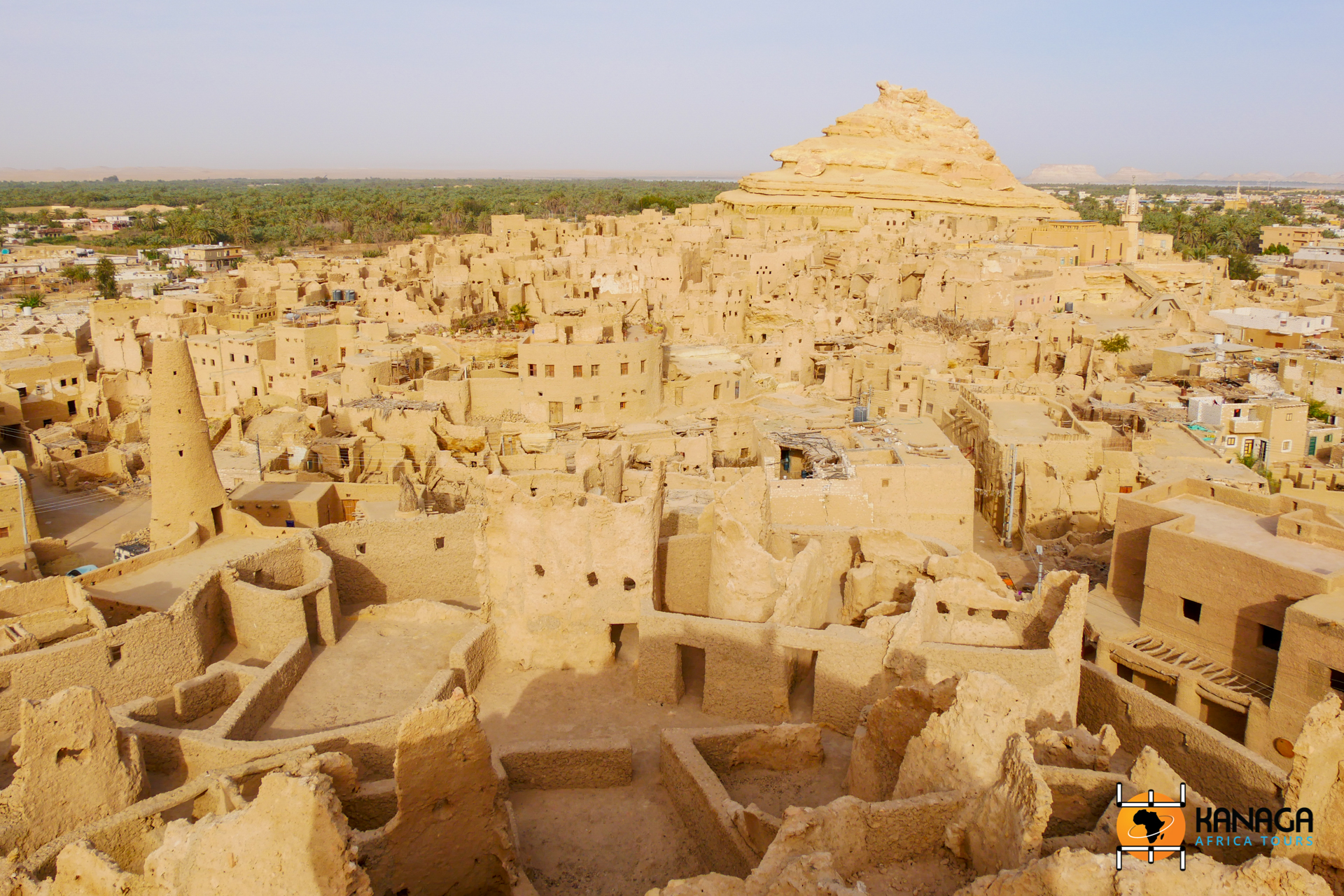© M. Santoro
When Herodotus coined the expression ‘islands of the blessed’ to refer to the Oases of the Egyptian Western Desert, he certainly had in mind the Oasis of Siwa, a paradisiacal Eden with a Berber heart and mysterious oracles, including hot springs, salt lakes and fertile gardens.
Despite its remote geographical location, in one of the most isolated desert depressions, its riches and idyllic appearance have been well known since antiquity, to the Pharaonic dynasties, the Greeks and the Romans, who followed one another, crossing the desert lands on ancient caravan routes to reach this fertile and irrigated paradise on earth.
Dominated by the limestone hill of the Jebel Mawta (Mountain of the Dead), a mysterious place that is home to ancient tombs dug into the rocky walls, dating from the Pharaonic era of the XXVI Dynasty to the more recent Greco-Roman era, the Siwa Oasis winds through dense palm groves, gardens and orchards, lapping against the waters of the Siwa Birket, the lake that contains the small island of the Fatnas Spring, and winds around the ancient town of Shali, a fortified 13th-century town built entirely of kershef, a mixture of clay, straw and salt, which unfortunately was gradually abandoned at the beginning of the 20th century, but which still retains its charm as an ancient caravan centre. Surrounded by Saharan sands and brightly coloured salt pans, surreal tongues of land lapping against the salt pans, dotted with springs of thermal water that open up like gems among the palm tree vegetation, embellished with ancient archaeological finds that bear witness to its strategic importance over the millennia, Siwa appears as a veritable pearl of the desert, with the cultural peculiarity of being the easternmost Berber stronghold in the Sahara.
Lose yourself in the ruins of the caravan fortress of Shali, among the mud and salt ruins, in an atmosphere suspended in time; contemplate the precious frescoes of the Siamun Tomb and the Crocodile Tomb, evoking ancient Egyptian divinities; immerse yourself in spiritual atmospheres in the presence of the Temple of the Oracle of Aghurmi, dedicated to the god Ammon, an Egyptian divinity (Amun) inherited from the Greeks, in the presence of whom Alexander the Great himself obtained in 331 B.C. legitimisation of his divine lineage and his ascension to the throne of Egypt; refresh yourself at the exotic spring of Cleopatra’s Baths, shaded by lush palm trees and enhanced by the nearby remains of the Umm Ubeyada Temple, with its splendid bas-reliefs; float incorporeally among the waters of the salt pans, in a surreal patchwork of desert pools in shades of pink and turquoise, surrounded by vast, breathtaking desert scenery blinding with sunlight; admire the Berber artisans at work, with their beautiful handicrafts of woven palms and salt sculptures; savour the delicious sugary dates and warm yourself at night in the tepid water of one of the 280 thermal springs scattered throughout the territory; relax among the comfortable cushions of the lodges, savouring a tajine, engulfed by the luxuriant gardens, or sip chai under the characteristic Bedouin tents, amidst the boundless “Great Sea of Sand”.
All this can be experienced in Siwa, in one of the most impressive stops in Egypt.







